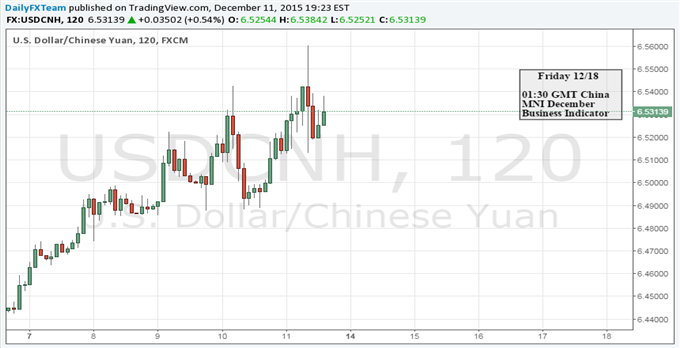In the past week, the Chinese yuan offshore exchange rate against the US Dollar has had little upside action, despite the US Dollar seeing higher volatility while breaking major technical support levels against other currencies. Mainly, this is because the offshore yuan exchange rate is still highly influenced by the onshore yuan rate, which is set to a peg versus the greenback, and is only allowed to float within +/-2% range. Once the People’s Bank of China, the Chinese central bank equivalent of the Federal Reserve, announced a new RMB weighting against a basket of currencies, only then did the USD/CNH rate find upward movement.

Looking into the next week, the New Yuan Loans and Chinese Consumer Price Index will be the key drivers to the USD/CNH pair as two of the highest rated Chinese economic event risk on the calendar. The figure of new yuan loans reflects the effectiveness of the Chinese government to stimulate the economy. In less than one year, the PBOC has cut interest rates six times. The most recent rate cut was in late-October. However, the new yuan loans data in October came in lower than expected at ¥513.6 million, nearly 50% lower than in the previous month of ¥1.05 billion.
The weaker than anticipated data showed that, even though the PBOC is pushing hard to increase lending, commercial banks have less incentive to issue new credits amid concerns on bad debts; the PBOC is pushing on a string. Companies likewise appear less willing to expand their businesses. Another figure added as a proof of the PBOC’s struggle to effectively stimulate the economy is the sum of total loans made by the four top Chinese commercial banks in October. This lending figure fell for the first time in six years, since the 2008/2009 global financial crisis. As a result, we believe that the new yuan loan figure will be a good indicator for traders to get a better sense of financial market sentiment in China. According to the most recent Bloomberg News survey, the November new yuan loans figure is expected to improve slightly to ¥750.0 billion.











Leave A Comment